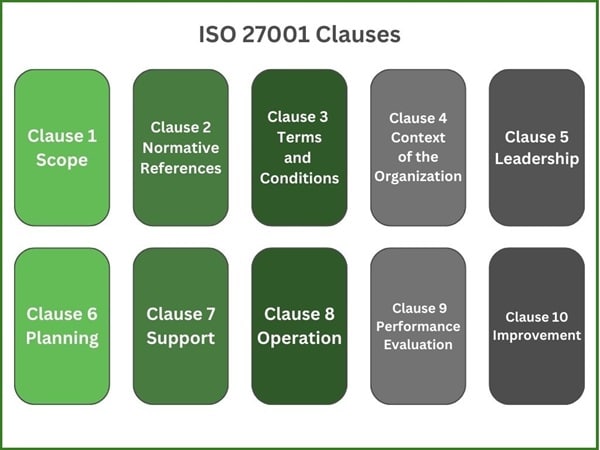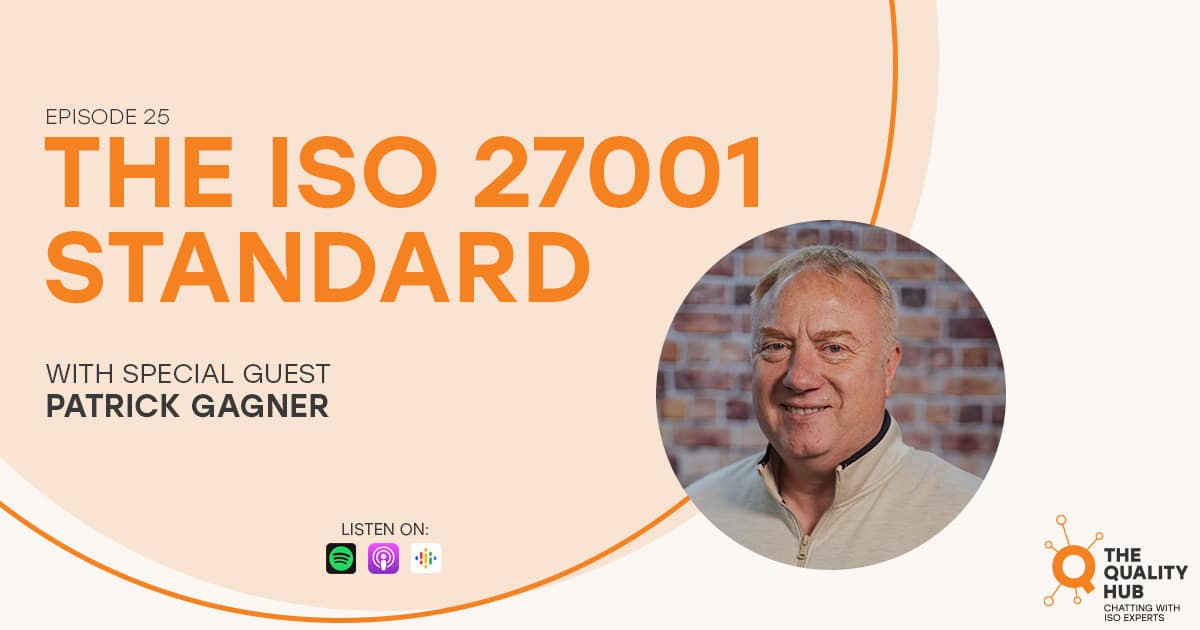ISO 27001 Clause 5 Explained
What is ISO 27001 Certification About?
ISO 27001 certification focuses on establishing and maintaining an effective Information Security Management System (ISMS) within an organization. It provides a structured framework for identifying information security risks, implementing controls to mitigate those risks, and ensuring that sensitive data, such as customer information and intellectual property, is well-protected. By following this standard, organizations can systematically manage their information security, ensuring that data is kept confidential, accurate, and available when needed.
A central aspect of ISO 27001 is its emphasis on risk management. Organizations are required to assess potential security threats, evaluate the severity of these risks, and take appropriate actions to reduce them. This risk-based approach helps ensure that security measures are relevant to the organization’s specific needs. The certification also ensures that companies comply with legal, regulatory, and contractual obligations related to information security, which is crucial for industries with strict data protection requirements, such as finance and healthcare.
Get a Free Quote
The ISO 27001 Certification Process
The certification process is rigorous, involving external audits by an accredited body to verify compliance with the standard. This validation reassures stakeholders, partners, and customers that the organization is committed to maintaining high standards of information security. ISO 27001 certification not only protects an organization’s data but also enhances its credibility and trustworthiness in the eyes of its clients and business partners.
Finally, ISO 27001 promotes continuous improvement. Organizations must regularly review and update their security practices to adapt to evolving threats and changes in technology. This ensures that the ISMS remains effective over time, and the organization can sustain its certification by continuously managing and improving its security measures.
How Does a Company Comply with ISO 27001 Clause 5?
ISO 27001 Clause 5 focuses on leadership and the organization’s commitment to establishing, maintaining, and improving the Information Security Management System (ISMS). For a company to comply with Clause 5, it must demonstrate leadership involvement in the ISMS and ensure that information security becomes an integral part of the organization’s overall strategy and operations.

Here are the key areas to focus on for compliance:
1. Leadership and Commitment (Clause 5.1):
Top management must demonstrate a clear commitment to the ISMS by ensuring that information security policies and objectives align with the organization’s goals and direction.
Leaders are responsible for integrating information security into the company’s processes, making resources available, and ensuring the ISMS is functioning effectively.
They must actively participate in and support continual improvement, as well as ensure that everyone in the organization understands the importance of adhering to the ISMS.
2. Information Security Policy (Clause 5.2):
The company must establish a documented information security policy that reflects the organization’s commitment to information security. This policy must be appropriate for the organization’s context, objectives, and information security risks.
The policy should provide clear direction for establishing security objectives, and it must be communicated within the organization so that all employees are aware of its importance.
Top management must ensure that this policy is maintained, reviewed, and updated regularly to remain effective.
3. Organizational Roles, Responsibilities, and Authorities (Clause 5.3):
The company must clearly define roles and responsibilities related to the ISMS. Top management is responsible for assigning and communicating these roles to ensure that the ISMS is effectively implemented and maintained.
Specific individuals must be given authority to manage and oversee the ISMS, ensuring accountability for information security throughout the organization.
Employees must understand their roles and responsibilities regarding information security, including how their actions impact the overall security posture of the organization.
Practical Steps for Compliance:
To comply with Clause 5, companies should take the following actions:
Engage leadership:
Senior leaders should be visibly involved in promoting the importance of the ISMS and be actively engaged in reviewing its performance.
Develop and communicate a security policy:
The policy should be aligned with the company’s overall strategy and known by everyone in the organization.
Assign clear responsibilities:
Ensure that there is a defined structure for managing and improving the ISMS, with clear roles and responsibilities assigned to key personnel.
In summary, compliance with ISO 27001 Clause 5 is all about leadership commitment, clear communication of the information security policy, and the proper delegation of responsibilities. It ensures that information security is integrated into the organization’s culture and that the leadership plays a proactive role in maintaining and improving the ISMS.
What’s the difference between ISO 9001 Clause 5 and ISO 27001 Clause 5?
ISO 9001 Clause 5 and ISO 27001 Clause 5 both focus on leadership and management’s role in driving the respective management systems. However, there are key differences in their purpose, scope, and focus due to the distinct nature of the two standards—ISO 9001 deals with quality management, and ISO 27001 deals with information security management.
Here’s a comparison of the two:
1. Purpose and Focus:
ISO 9001 (Quality Management):
Clause 5 in ISO 9001 is focused on leadership’s role in ensuring the effectiveness of the Quality Management System (QMS). It emphasizes customer satisfaction, product/service quality, and continuous improvement of processes to meet regulatory and customer requirements.
ISO 27001 (Information Security Management):
Clause 5 in ISO 27001 is focused on leadership’s responsibility in establishing and supporting the Information Security Management System (ISMS). The goal is to protect the organization’s information assets by managing risks related to confidentiality, integrity, and availability.
2. Key Elements:
ISO 9001 Clause 5:
Leadership and Commitment: Leadership must ensure that the QMS is aligned with the organization’s strategic goals and is continuously improved to meet customer expectations.
Customer Focus: A major emphasis is on meeting customer requirements and enhancing satisfaction through quality products and services.
Quality Policy: Top management must develop and communicate a quality policy that is aligned with the business strategy and is understood by employees.
Roles, Responsibilities, and Authorities: Leadership must ensure that roles within the QMS are clearly defined and that the system is adequately resourced.
ISO 27001 Clause 5:
Leadership and Commitment: Leadership must actively support the ISMS by ensuring it is integrated into the organization’s processes and aligned with business goals related to information security.
Information Security Policy: Management must create and maintain an information security policy that reflects the organization’s approach to protecting data and managing risks.
Roles, Responsibilities, and Authorities: Similar to ISO 9001, management is responsible for assigning clear roles and authorities, but the focus here is on managing and protecting information security risks.
3. Focus on Outcomes:
ISO 9001: The outcome of Clause 5 in ISO 9001 is to ensure that the QMS is driven by leadership to improve product/service quality, meet regulatory requirements, and enhance customer satisfaction.
ISO 27001: The outcome of Clause 5 in ISO 27001 is to ensure that leadership supports the ISMS in managing information security risks, protecting sensitive data, and ensuring that information security becomes part of the organizational culture.
4. Customer Focus vs. Risk Focus:
ISO 9001: Leadership in ISO 9001 is centered on ensuring that the organization meets customer requirements and delivers quality products or services. It places significant emphasis on customer satisfaction as a core business objective.
ISO 27001: Leadership in ISO 27001 is primarily focused on managing risks to the organization’s information security. It is less concerned with customer satisfaction directly and more with protecting information from threats like data breaches, cyberattacks, or unauthorized access.
5. Policy Focus:
ISO 9001: The policy created by top management is focused on quality objectives, ensuring continual improvement in quality processes, and aligning with customer needs.
ISO 27001: The information security policy focuses on safeguarding information, managing risks, and establishing protocols for maintaining the security of critical information assets.
Summary:
ISO 9001 Clause 5 is about leadership’s role in driving quality management, focusing on customer satisfaction, product/service quality, and continuous improvement.
ISO 27001 Clause 5 is about leadership’s responsibility in supporting information security management, focusing on identifying and managing security risks and protecting sensitive information.
Both clauses emphasize the importance of leadership, but the core difference lies in the focus: ISO 9001 centers on quality and customer satisfaction, while ISO 27001 focuses on information security and risk management.

How Much Time Does it take to get ISO 27001 Certification?
ISO 27001 certification takes 4 to 6 months to complete. If you are implementing multiple standards at the same time, it could take longer.
How Much Does it Cost to get ISO 27001 Certification?
Depending on the size and complexity of your company, it can cost between $18,000 and $23,000 to prepare for ISO 27001 certification.
Helpful Resources: The ISO 27001 Standard Podcast
In this episode of “The Quality Hub” podcast, host Xavier Francis interviews Patrick Gagner, a Cyber Consultant at Core Business Solutions, about the ISO 27001 and Information Security Management System. Pat explains ISO 27001 as an Information Security Management System (ISMS), emphasizing its risk-based approach to safeguarding information confidentiality, integrity, and availability. Listen Now
What is Annex A?
With ISO 27001 certification, Annex A plays a critical role as it provides a comprehensive list of information security controls that organizations can use to mitigate risks identified in their Information Security Management System (ISMS).

These controls are categorized into 14 domains, covering various aspects of information security such as access control, encryption, physical security, and incident management. Annex A helps organizations identify the specific controls they need to implement based on their unique risks and business environment, ensuring that the ISMS is tailored to address relevant security challenges.
It’s important to note that Annex A is not a checklist of mandatory requirements but rather a catalog of controls that organizations can choose from as appropriate to their specific needs. During the risk assessment process, an organization identifies its security risks and then selects controls from Annex A (or alternative controls) to mitigate those risks.
Annex A essentially serves as a reference to ensure that the organization has considered a wide range of security areas, providing a structured way to safeguard the confidentiality, integrity, and availability of information.
The use of Annex A demonstrates a proactive and structured approach to information security within the organization’s ISO 27001 framework.
Customer Reviews


